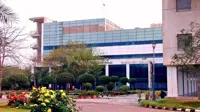IBM sets world record by creating high-efficiency solar cell
12 Feb 2010
IBM yesterday said that it had built a solar cell in which the key layer absorbs most of the light for conversion into electricity, made entirely of readily-available elements.
 According to IBM, this development sets a new world record for efficiency and holds potential for enabling solar cell technology to produce more energy at a lower cost. Comprising copper (Cu), tin (Sn), zinc (Zn), sulfur (S), and / or selenium (Se), the cell's power conversion demonstrates an efficiency of 9.6 per cent or 40 per cent higher than the value previously attained for this set of materials.
According to IBM, this development sets a new world record for efficiency and holds potential for enabling solar cell technology to produce more energy at a lower cost. Comprising copper (Cu), tin (Sn), zinc (Zn), sulfur (S), and / or selenium (Se), the cell's power conversion demonstrates an efficiency of 9.6 per cent or 40 per cent higher than the value previously attained for this set of materials.
IBM says it is now leveraging its expertise in microprocessor technology, materials and manufacturing.
"In a given hour, more energy from sunlight strikes the earth than the entire planet consumes in a year, but solar cells currently contribute less than 0.1 per cent of electricity supply -- primarily as a result of cost," says Dr. David Mitzi, who leads the team at IBM Research that developed the solar cell.
Dr. Mitzi says, "The quest to develop a solar technology that can compare on a cost per watt basis with the conventional electricity generation, and also offer the ability to deploy at the terawatt level, has become a major challenge that our research is moving us closer to overcoming."
The IBM researchers describe their achievement of the thin-film photovoltaic technology in a paper published in Advanced Materials this week, highlighting the solar cell's potential to accomplish the goal of producing low-cost energy that can be used widely and commercially.

.webp)


.webp)




























